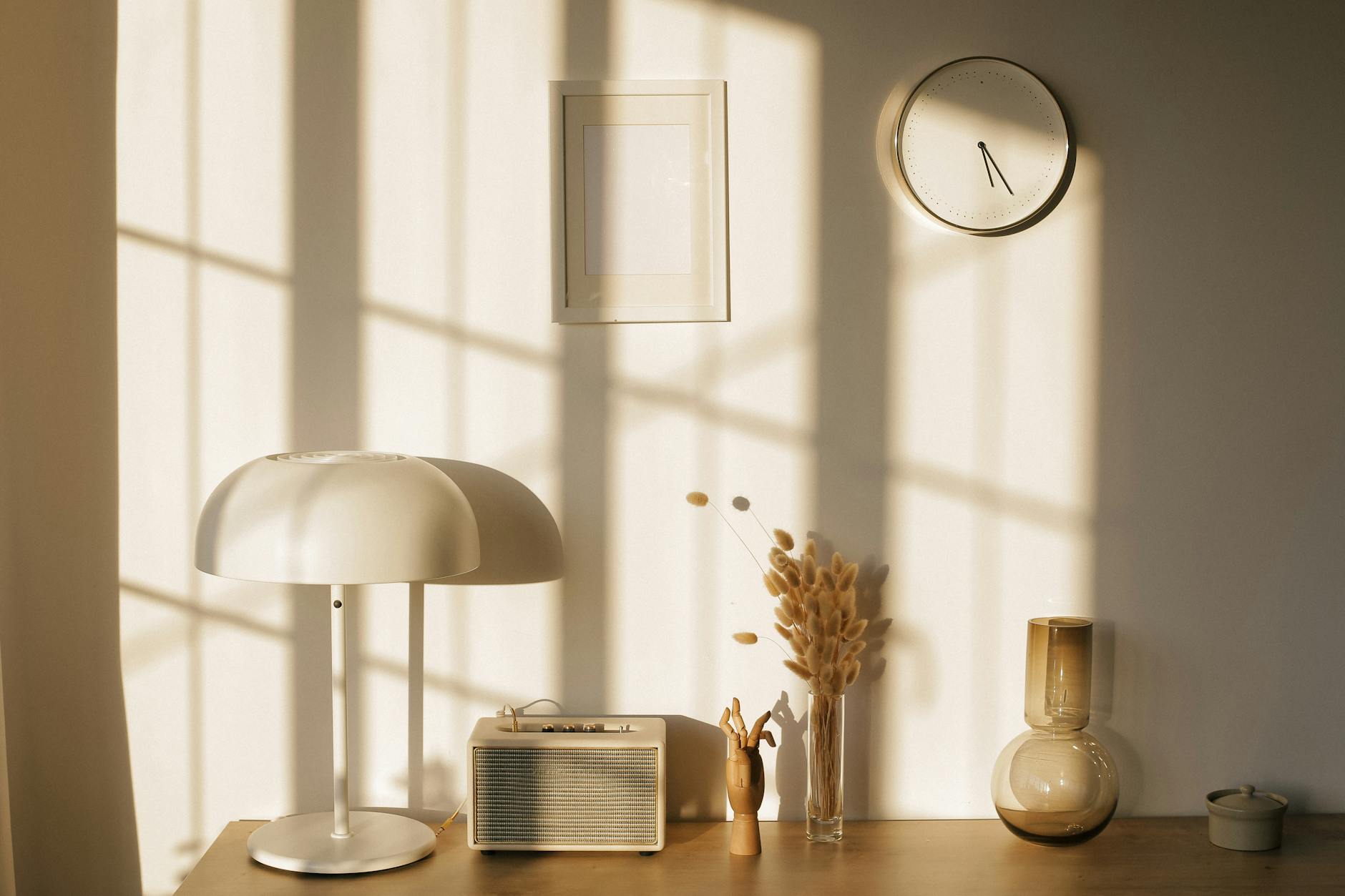Every plant has a special relationship with the sun, just like humans. For each type of plant, there’s a unique amount of sunlight that’s just right. Too little or too much, and they won’t thrive. Some love basking in full sun all day, while others prefer a shady spot to keep cool. Knowing your plants’ sunlight requirements can make a huge difference in their health and growth. In this blog post, we’ll dive into understanding sunlight requirements for different plants. You’ll learn how to identify your plants’ sunlight needs and some tips to help them get just the right amount of rays. By the end of this post, you’ll be well on your way to becoming a sunlight expert for your garden.
Understanding Sunlight Requirements is Important
Why Sunlight Matters for Plants
 Forest (Photo by Oleksandr P)
Forest (Photo by Oleksandr P)
When it comes to growing healthy and vibrant plants, understanding their sunlight requirements is absolutely crucial. Sunlight, as we all know, is the primary source of energy for plants through a process called photosynthesis. Without an adequate amount of sunlight, plants can struggle to grow properly and may even become weak or prone to disease.
Plants and Different Sunlight Needs
 Interior of art studio with different drawings and sketch on table near chair with potted plant and stationery on window (Photo by Skylar Kang)
Interior of art studio with different drawings and sketch on table near chair with potted plant and stationery on window (Photo by Skylar Kang)
Different plants have different sunlight requirements based on their natural habitats and evolutionary adaptations. Some plants thrive in full sun, while others prefer partial or even full shade. Understanding these varying needs is important for creating the ideal environment for your plants to flourish.
The Impact of Insufficient Sunlight
 Macro Photography of Red Rose (Photo by Ylanite Koppens)
Macro Photography of Red Rose (Photo by Ylanite Koppens)
Insufficient sunlight can have a detrimental impact on plant health. When plants don’t receive enough light, their growth can be stunted, and their leaves may become pale or discolored. They may also start leaning towards the light source in an attempt to capture more sunlight. Without proper exposure to sunlight, plants may struggle to produce energy and essential nutrients, making them more vulnerable to pests and diseases.
The Dangers of Excessive Sunlight
 Micro Photo of White Plant (Photo by icon0.com)
Micro Photo of White Plant (Photo by icon0.com)
On the other hand, excessive sunlight can also harm plants. Just like humans, plants can get sunburned too! Intense heat and prolonged exposure to direct sunlight can scorch leaves, causing them to turn brown and wilt. This can result in reduced photosynthesis and may even lead to the death of the plant. Therefore, understanding the right balance of sunlight for each plant is vital to prevent damage.
Determining Sunlight Requirements
 Crop happy middle aged ethnic female farmer in casual clothes standing in garden with box of fresh ripe eggplants after harvesting on sunny day (Photo by Zen Chung)
Crop happy middle aged ethnic female farmer in casual clothes standing in garden with box of fresh ripe eggplants after harvesting on sunny day (Photo by Zen Chung)
To determine the sunlight requirements of your plants, it is essential to consider factors such as their native habitat, leaf characteristics, and growth patterns. Some plants, like succulents, thrive in bright, direct sunlight, while others, like ferns, prefer indirect or filtered light. It is important to research the specific needs of each plant species and provide the appropriate amount of sunlight accordingly.
Creating Optimal Growing Conditions
 Soft sofa in living room with potted plants and mirror (Photo by Max Rahubovskiy)
Soft sofa in living room with potted plants and mirror (Photo by Max Rahubovskiy)
By understanding the sunlight requirements of different plants, you can create optimal growing conditions for your green companions. This may involve the strategic placement of plants in your garden or choosing the right indoor location that provides the ideal amount of light. Additionally, using tools such as grow lights or shade cloths can help adjust the sunlight levels to meet the specific needs of your plants.
Conclusion
In conclusion, comprehending the sunlight requirements of plants is vital for their overall health and growth. Whether you are an avid gardener or a plant enthusiast, providing the right amount of sunlight is fundamental to ensuring your plants thrive. By understanding the unique needs of each plant species, you can create an environment that supports their well-being and allows them to flourish to their full potential.
Understanding Sunlight Requirements for Different Plants
Factors That Affect Sunlight Requirements
As a plant enthusiast, it’s crucial to understand the factors that affect sunlight requirements for different plants. By considering these factors, you can provide optimal growing conditions for your green friends. In this section, we’ll explore the impact of natural light versus artificial light, the duration of sunlight exposure, and the intensity of sunlight.
Natural Light vs. Artificial Light
 The red beetle (Photo by Dieter Grein)
The red beetle (Photo by Dieter Grein)
Imagine a beautiful garden bathed in warm sunlight, with vibrant flowers reaching for the sky. That’s the power of natural light. Plants have evolved over millions of years to thrive under the sun’s rays, utilizing the full spectrum of light. Natural light not only provides the necessary wavelengths for photosynthesis but also offers a balanced combination of intensity and duration.
On the other hand, artificial light plays a crucial role when natural sunlight is limited. Indoor gardening, for example, heavily relies on artificial light sources like fluorescent or LED bulbs to provide the necessary light energy for plant growth. While artificial light can be manipulated to replicate specific wavelengths, it may lack the full spectrum that plants need for optimal development. Therefore, a combination of both natural and artificial light is often the key to success in indoor gardening.
Duration of Sunlight Exposure
 Forest (Photo by Oleksandr P)
Forest (Photo by Oleksandr P)
Just like humans, plants have their own preferences when it comes to the duration of sunlight exposure. Some plants, commonly referred to as “full sun” plants, thrive in direct sunlight for a significant portion of the day. These sun-loving plants require at least 6-8 hours of direct sunlight to meet their energy needs. Examples include tomatoes, peppers, and sunflowers.
On the other hand, there are shade-tolerant plants that prefer indirect or filtered sunlight. These plants have adapted to grow in the understory of forests or in areas with limited direct sunlight. They thrive with shorter periods of sunlight exposure, ranging from 2-4 hours a day. Ferns, hostas, and some types of moss are great examples of shade-loving plants.
Understanding the specific sunlight requirements of different plants is essential for their healthy growth and productivity. Whether you have a sunny balcony or a shady corner, selecting plants that match the available sunlight is crucial.
Intensity of Sunlight
 Opened window with bars viewing majestic mountains and terrace in bright summer sunlight (Photo by Evgenia Basyrova)
Opened window with bars viewing majestic mountains and terrace in bright summer sunlight (Photo by Evgenia Basyrova)
When it comes to sunlight, it’s not just about the duration but also the intensity. Intensity refers to the brightness or strength of sunlight reaching the plants. Different plants have varying tolerance levels for intense sunlight.
Some plants, such as cacti and succulents native to arid regions, can tolerate high-intensity sunlight without any issues. They have evolved mechanisms to withstand the scorching rays of the sun and thrive under intense heat. On the other hand, delicate plants like ferns or certain orchid species prefer lower-intensity sunlight, as intense light can scorch their fragile leaves.
Understanding the intensity of sunlight required by your plants can help you create the ideal growing conditions. By providing the right balance of light intensity, you can ensure healthy growth and prevent damage caused by inadequate or excessive light exposure.
In conclusion, the factors that affect sunlight requirements for different plants include natural light versus artificial light, the duration of sunlight exposure, and the intensity of sunlight. By considering these factors, you can provide the optimal lighting conditions for your plants, ensuring their growth and well-being.
Understanding Sunlight Requirements for Different Plants
Different Categories of Plants and Their Sunlight Needs
When it comes to gardening, understanding the sunlight requirements of different plants is crucial for their healthy growth and development. Just like humans, plants have varying preferences when it comes to sun exposure. Some thrive in bright sunlight, while others prefer the shelter of shade. In this section, we will explore three main categories of plants based on their sunlight needs Sun-Loving Plants, Partial Shade Plants, and Full Shade Plants.
Sun-Loving Plants
 White Rose and Pink Daisy (Photo by Pixabay)
White Rose and Pink Daisy (Photo by Pixabay)
Sun-loving plants are like sunbathers – they soak up the sun’s rays with delight. These plants require a minimum of six hours of direct sunlight each day to flourish. They are typically full of energy, bursting with vibrant colors and lush foliage. Examples of sun-loving plants include roses, geraniums, marigolds, and sunflowers.
To ensure the success of sun-loving plants, it is essential to provide them with ample sunlight. Consider planting them in areas that receive the most sunlight throughout the day, such as south-facing gardens or open spaces without obstructions. Remember to water them regularly, as sun-loving plants tend to have higher water needs due to increased evaporation.
Partial Shade Plants
 Macro of fern unrolling young frond (Photo by Skyler Ewing)
Macro of fern unrolling young frond (Photo by Skyler Ewing)
Partial shade plants are adaptable and can thrive in both sun and shade. They require a moderate amount of sunlight, typically around three to six hours per day. These versatile plants can tolerate brief periods of direct sunlight but prefer the shelter of shade during the hottest hours of the day. Examples of partial shade plants include hostas, begonias, impatiens, and ferns.
To cater to the needs of partial shade plants, consider planting them in areas with dappled sunlight, such as under trees or beside buildings that provide partial shade throughout the day. This way, they can enjoy a balance of light and shade, ensuring their optimal growth and development. Remember to water them adequately and maintain a well-draining soil to keep them thriving.
Full Shade Plants
 Green leaves of plant against white wall (Photo by Karolina Grabowska)
Green leaves of plant against white wall (Photo by Karolina Grabowska)
Full-shade plants are the shade enthusiasts of the plant world. These plants thrive in minimal sunlight and can tolerate less than three hours of direct sunlight per day. They are usually found in areas with dense tree canopies or in the shadow of tall buildings. Examples of full-shade plants include ferns, hostas, astilbes, and mosses.
To create the perfect environment for full-shade plants, choose areas in your garden that receive very little direct sunlight. These areas can be under dense tree cover or on the north side of your house. Keep in mind that full-shade plants require consistent moisture, so ensure the soil remains moist but well-drained to prevent waterlogging.
Understanding the sunlight requirements of different plants is key to ensuring their optimal growth and health. By categorizing plants into sun-loving, partial-shade, and full-shade categories, you can create a harmonious garden that caters to the unique needs of each plant. So, go ahead and transform your garden into a vibrant oasis by choosing the right plants and providing them with the perfect balance of sunlight and shade.
Assessing Your Plant’s Sunlight Requirements
When it comes to growing healthy and thriving plants, understanding their sunlight requirements is essential. Different plants have different needs when it comes to the amount of sunlight they require to grow and flourish. In this section, we will explore different ways to assess your plant’s sunlight requirements, so you can provide them with the ideal conditions for optimal growth.
Reading Plant Tags and Labels
One of the easiest ways to determine a plant’s sunlight requirements is by reading the information provided on its tags and labels. When you purchase a plant from a nursery or garden center, it often comes with a tag that provides valuable information about its care, including its sunlight needs. Look for keywords such as “full sun,” “partial shade,” or “shade” to get an idea of the amount of sunlight your plant requires.
Observing Plant Behavior
Another effective way to assess your plant’s sunlight requirements is by observing its behavior. Plants often give us subtle clues about their sunlight needs through their growth patterns and physical appearance. For example, if a plant is reaching towards the light source and its leaves are turning pale or yellowish, it may be an indication that it needs more sunlight. On the other hand, if a plant’s leaves are wilting or showing signs of sunburn, it may be getting too much direct sunlight.
Consulting Gardening Resources
If you’re unsure about your plant’s sunlight requirements even after reading the tags and observing its behavior, don’t worry! There are plenty of gardening resources available to help you. Online plant databases, gardening forums, and books dedicated to plant care can provide valuable insights into the specific sunlight needs of different plants. Additionally, local garden centers and nurseries often have knowledgeable staff who can provide guidance and recommendations based on your specific plant’s requirements.
Now that we’ve explored different ways to assess your plant’s sunlight requirements, you can confidently provide them with the ideal conditions for growth. Remember, understanding your plants’ sunlight needs is crucial for their overall health and vitality. By taking the time to assess their requirements and providing them with the right amount of sunlight, you’ll be rewarded with beautiful, thriving plants that will bring joy to your garden.
 Light room with retro radio and decorative vases with dry plants on desk near wall with clock and window shadow in sunlight (Photo by Ann poan)
Light room with retro radio and decorative vases with dry plants on desk near wall with clock and window shadow in sunlight (Photo by Ann poan)
Conclusion
In conclusion, understanding the sunlight requirements for different plants is crucial for successful gardening or indoor plant care. By knowing the specific needs of each plant, you can provide them with the appropriate amount of sunlight to thrive and flourish.
Sunlight is essential for photosynthesis, the process through which plants convert light energy into chemical energy to fuel their growth. Some plants, like succulents and cacti, prefer bright and direct sunlight, while others, like ferns and peace lilies, thrive in indirect or filtered light.
It is important to consider factors such as the intensity and duration of sunlight, as well as any potential shade or obstructions that may affect the amount of light reaching your plants. Observing the behavior of your plants, such as leaf color, growth patterns, and overall health, can also provide valuable insights into their sunlight requirements.
Remember to regularly monitor and adjust the sunlight exposure for your plants, especially if you are growing them indoors. This can be achieved by placing them near windows with the appropriate light conditions or using artificial grow lights if necessary.
By providing your plants with the right amount of sunlight, you can ensure their optimal growth and overall well-being. So take the time to research and understand the sunlight requirements of your plants, and watch them thrive in your garden or indoor space.